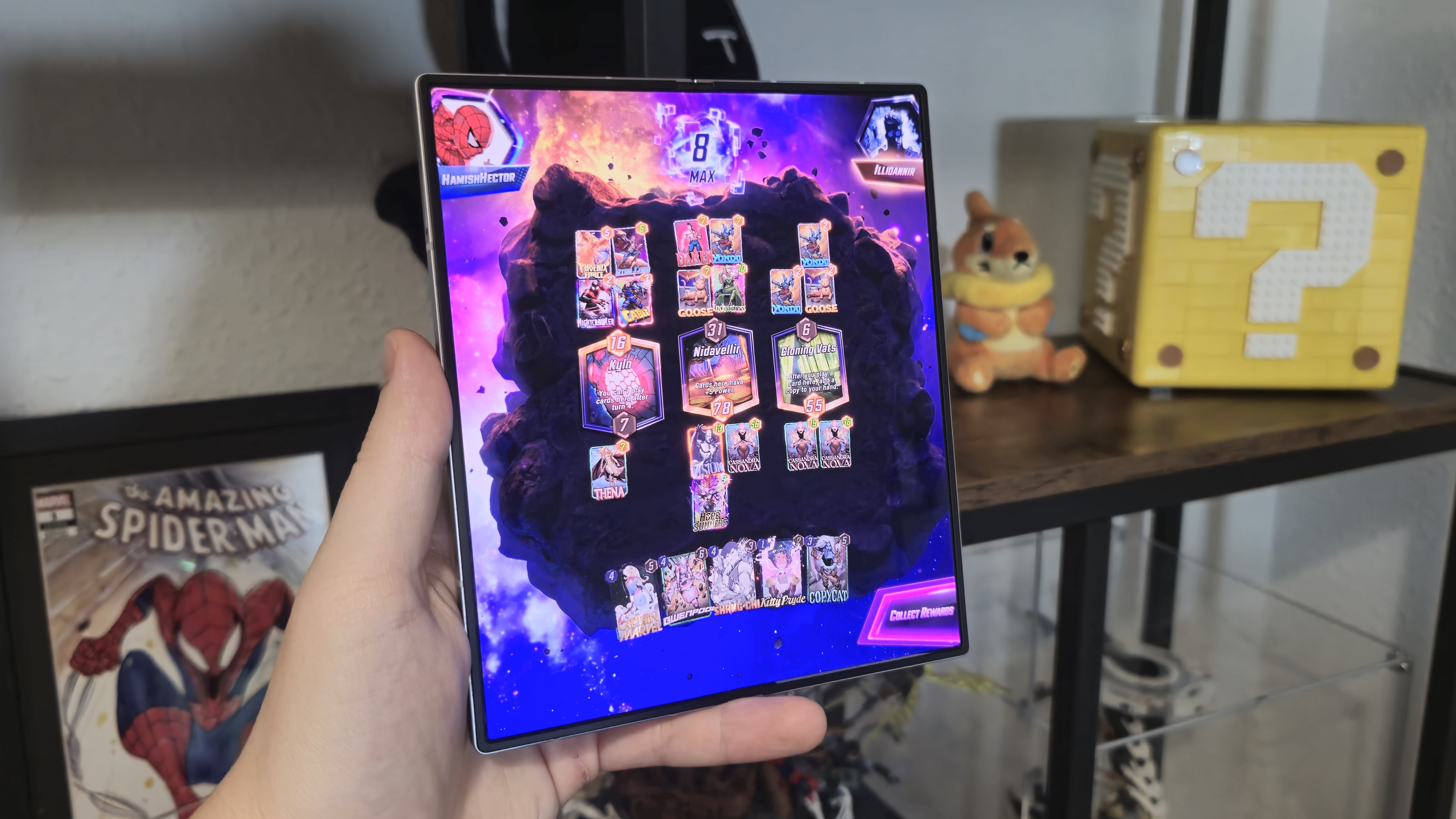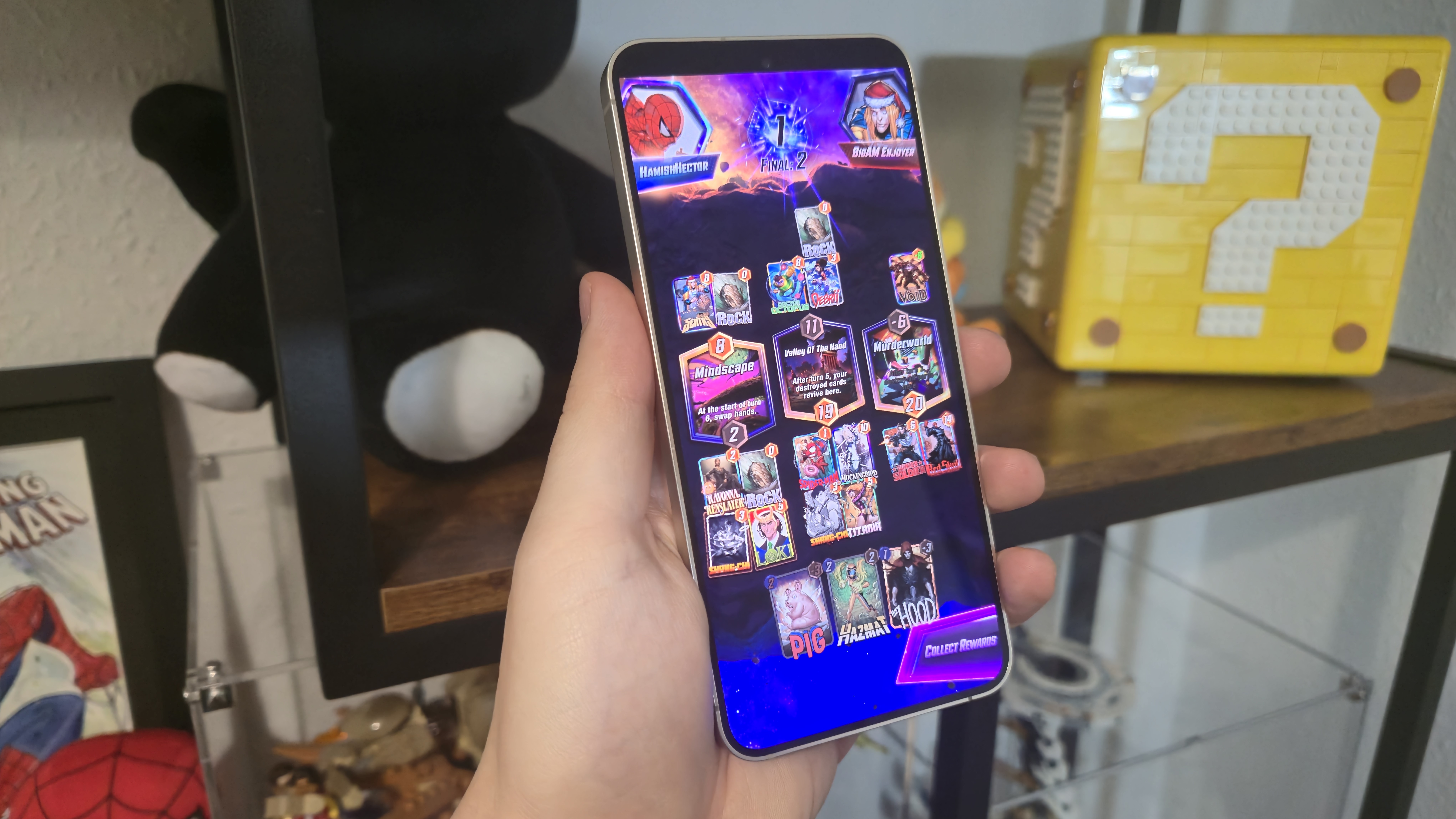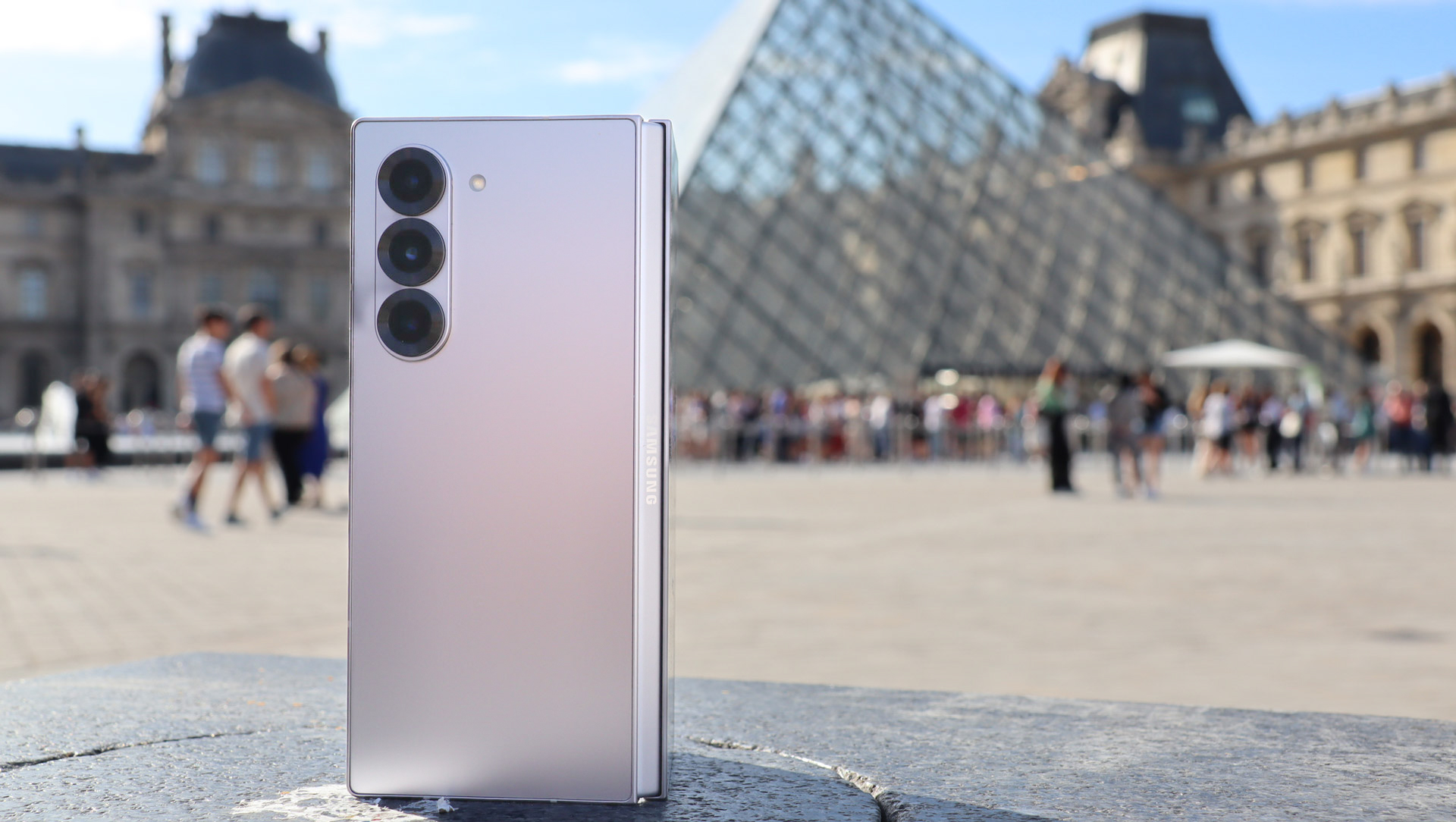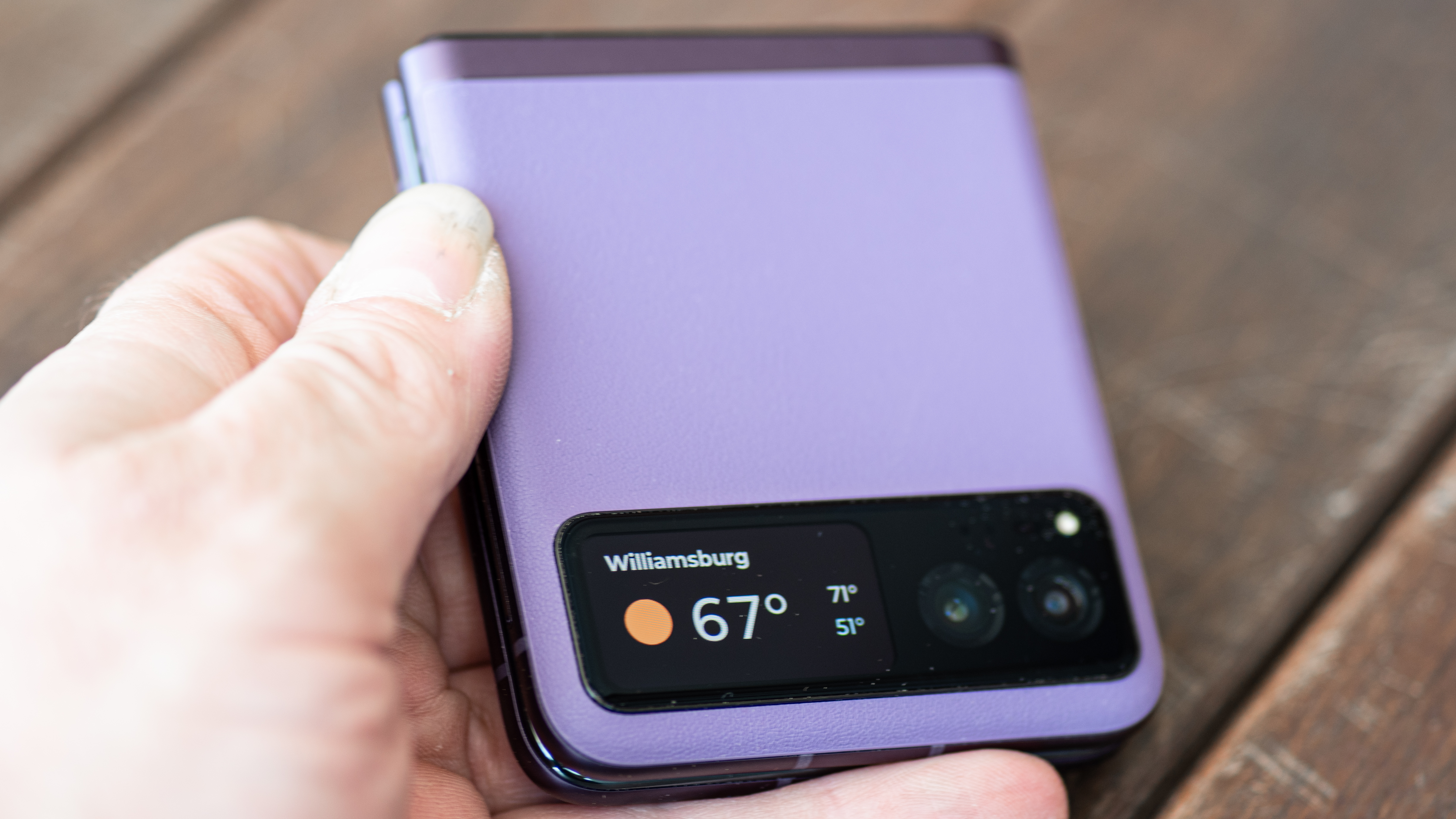The Samsung Galaxy Z Fold 6 is my favorite phone ever, but I can't justify buying one yet
We should all have a foldable phone... one day

On the most recent episode of the TechRadar Podcast – which you can catch on YouTube, Spotify and Apple Podcasts – I went on a small rant about foldables. Specifically that modern flip phones (the ones that open like a clamshell) make zero sense to me; but that fold phones (which open like a book to become mini tablets) sound like a brilliant idea.

Unlike the usual nuances that you’ll find between successive phone generations or brands, a folding phone feels like something truly revolutionary – "revolutionary" being a relative term here, seeing that the tech is now in its sixth generation from Samsung’s perspective, and about to enter its second-generation at Google with the Pixel 9 Pro Fold.
After the podcast shoot I was told that because our Galaxy Z Fold 6 review was being handled by our US team, the model we had in our London office wasn’t assigned to anyone in particular. So I took the opportunity to give it a try to see if folding phones were as great as I expected.
And folks, I was right. It’s the best phone I’ve ever used.
Better in every way that matters
Let’s start with the obvious. The massive inner screen makes every phone app better. Mobile games have more space to fill and feel less cramped; text on websites is easier to read; plus the keyboard is larger and far easier to type on.


At the end of last year, I bought a cheap tablet and a Marvel Unlimited subscription so I could read more digital comics. I use it plenty at home, but the tablet is inconvenient to take with me when I go out, limiting how often I can use it. The Z Fold 6 has been the perfect replacement; I have it in my pocket ready to fold open and start flicking through digital pages at any time.
Videos also benefit from the increased screen size, but in apps that support it – such as YouTube – I often watch them with the screen half bent (see the image below). The phone becomes a makeshift stand for itself, with the video playing on the top half of the screen and controls appearing on the bottom half – at least in YouTube’s case. Not every app has controls that pop up.
Sign up for breaking news, reviews, opinion, top tech deals, and more.
You can also use two apps at once, running them side by side on two halves of the unfolded inner screen. This allows me to simultaneously watch YouTube and play Marvel Snap while lounging on my couch.
Every single aspect of the display is more versatile and useful than my usual phone.

The cameras aren’t technically better than what you’d find on other smartphones – the Z Fold 6 has a 50-megapixel main sensor, 12-megapixel ultra-wide, and 10-megapixel 3x optical zoom cameras on its back; a 10-megapixel camera on its front; and a 4-megapixel under-screen sensor hidden inside the unfolded screen. The latter I only used for video calls – although while on my vacation, I was able to easily take higher-quality selfies thanks to its unique design.
The rear cameras on phones are always better than their front-facing counterparts, and while you can always use them for selfies, it’s a challenge because you can't see what the picture looks like.
That’s not a problem with the Z Fold 6. It uses the Selfie mode in the camera app while it’s closed, then, when it's open, the phone will use the rear cameras for taking snaps – letting me enjoy 50-megapixel selfies with zero hassle as I can see what they’ll look like.
What’s more, some of the criticisms I was expecting to have with regards to a folding handset faded almost instantly – in my two weeks of testing, I encountered next to no meaningful issues with the phone.

The Z Fold 6 is thicker and heavier than my normal smartphone – when folded, it’s 12.1mm thick and weighs 239g, compared to the Samsung Galaxy S24, which is 7.6mm thick and 167g – but I never experienced any issues using it one-handed or slipping it into a pocket.
Additionally, while I won’t pretend the crease down the middle of the screen isn't obvious, it certainly isn't as disruptive as I thought it might be. After a day or so you get used to it. In fact, a lot of the time with the brightness turned up, it will visually vanish, returning only when I enter a black dark mode menu or another dark screen. Nevertheless, it’s nowhere near distracting enough to make me abandon this superior menu color setting.
The only slight irritation I could find is that if you're using the outer screen then some apps are slightly clipped on the sides – since it’s a little lankier than typical displays. On the flip-side, pretty much every app handled the large screen with zero hiccups, save one third-party program I installed to test some smart glasses – although, since it’s an unofficial Android app that isn't in the Play Store, I’m not surprised it isn’t fine-tuned to work with foldables.
So long for now
With almost nothing negative to say about the Samsung Galaxy Z Fold 6, and a heck of a lot of positives to lay at this folding phone’s feet, it won’t surprise you to read that this gadget is easily in my top three favorites ever – maybe even taking the top spot.
I’ve had the privilege of using a lot of different tech – from the highest of high-end headphones to experimental VR setups, to the super-budget TVs to mid-range laptops, and everything in between – but given how much I rely on my phone, the improvements and convenience the Z Fold 6 brings have a more significant impact on my day-to-day than really any other device.
So why, then, am I not rushing out to buy one for myself?

Price is the most significant factor, and one I’ve not talked about so far. The cheapest Galaxy Z Fold 6 (which comes with 256GB of storage and 12GB of RAM) costs $1,899.99 / £1,799 / AU$2,749, which is more than double the cost of the S24 ($799 / £799 / AU$1,399).
I don’t test enough phones, let alone enough foldables, to be in a position to judge whether the Z Fold 6 is good value. That's the reason I point you to the thoughts of our infinitely more seasoned phone reviewer and Editor At Large, Lance Ulanoff, who took on our proper Samsung Galaxy Z Fold 6 review – although what I would say is that if budget isn't an issue for you, then you should at least investigate the Z Fold 6 as an option based on my time with it.
Regardless, however you slice it, $1,899.99 / £1,799 / AU$2,749.
This issue is further compounded by continuing fears surrounding foldable phones’ durability. What’s the use of spending so much on a phone if it becomes damaged easily?
Samsung says the screen is able to withstand at least 200,000 folding cycles on average (one cycle is opening it fully and then closing it fully). At 100 folds a day (which is a safe over-estimate based on my experience), the phone’s screen would survive at least five years. Considering most people (55.47%) change their phone every two-to-three years (according to a September 2023 Journal of Consumer Affairs report), this particular aspect of the phone’s durability seems more than fine. In fact, given 100 folds a day is excessive, I wouldn’t be surprised if the display lasted several years longer for most users.
However, it comes with only a IP48 dust- and water-resistance rating. On the water side of things (the 8) is great, but the dust protection is a 4, which means the phone is only considered protected against objects over 1mm in size. This means it isn’t dust protected or dust tight; small dirt particles such as sand could easily get into your phone and cause damage to the screen, hinge and other parts of your device. Only an absolute maniac would consider taking the Z Fold 6 to a beach…
The price and the fact the phone isn't dustproof are understandable given the Z Fold 6’s unique design compared to other flagship phones. Nevertheless, they’re big enough blockers right now to scare me off buying one.

Things are beginning to change. Samsung is seemingly devoted to improving the dust resistance of its foldables; after all, the Z Fold 5 only had an IPX8 rating, meaning it didn't promise any dirt particle protection. Meanwhile, other foldables are starting to achieve an IP5 rating: the Motorola Razr (2023) came with a IP52 rating, although the lack of significant water protection is equally unfavorable. In addition, as the tech becomes more reliable and easier to manufacture, we should see prices come down, too.
I’m sad to see the review unit of the Samsung Galaxy Z Fold 6 go then, but it’s convinced me that foldables will be the future of smartphones, and I can’t wait for the day there's one in my pocket.
Well, "fold" foldables are the future; I still don’t get the appeal of flip foldables such as the Samsung Galaxy Z Flip 6, but maybe I just need to try one of them next…
You might also like

Hamish is a Senior Staff Writer for TechRadar and you’ll see his name appearing on articles across nearly every topic on the site from smart home deals to speaker reviews to graphics card news and everything in between. He uses his broad range of knowledge to help explain the latest gadgets and if they’re a must-buy or a fad fueled by hype. Though his specialty is writing about everything going on in the world of virtual reality and augmented reality.